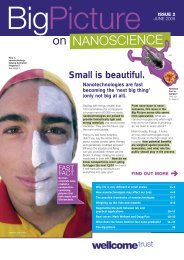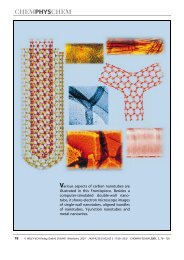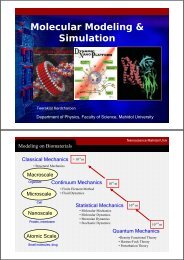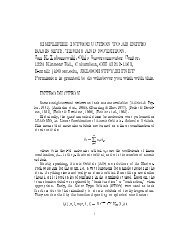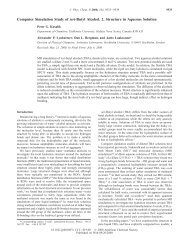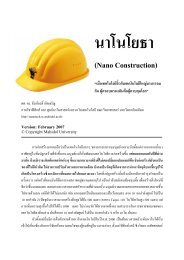'Thin films & coatings' Roadmap - Nano Mahidol
'Thin films & coatings' Roadmap - Nano Mahidol
'Thin films & coatings' Roadmap - Nano Mahidol
Create successful ePaper yourself
Turn your PDF publications into a flip-book with our unique Google optimized e-Paper software.
Although this production process has reached mass-production levels, for most<br />
applications it implies high purity for solvents and starting materials. In addition to<br />
these limitations, this process wastes a large amount material (very expensive in the<br />
case of materials used in display production). Because of that, some experts<br />
consider that this process will mostly be used as a research tool.<br />
2.3.1.7 Spray coating<br />
There are two main methods: plasma spray coating and thermal spray coating. The<br />
plasma spray coating (also known as plasma arc plating, plasma arc spraying,<br />
plasma coating), powders are introduced in a cavity that contains the gas stream of a<br />
plasma gun. After being melted, the powders are projected onto the surface being<br />
coated. With regard to the Thermal spraying coating, it consists of heating a feed<br />
stock material (powder or wire) and accelerating it to a high velocity by a gas stream.<br />
Then the particles strike the substrate surface and the particles deform and freeze<br />
onto the substrate. The collision speed is an essential element, which directly<br />
influences the coating properties.<br />
Main barriers to success and research paths<br />
According to the experts, process reliability is the main bottleneck. The control of 3<br />
variables (material, heat and speed) is essential to get a reliable and reproducible<br />
coating matching the expected requirements<br />
2.3.1.8 Self-assembly<br />
Self-assembling consist of designing atoms and molecules such that chemical and<br />
physical processes will, under the right conditions, cause the atoms and molecules to<br />
self-organise in the desired place with the desired structure. Self-assembly of thin<br />
<strong>films</strong> (usually monolayers) generally occurs on a substrate that facilitates molecular<br />
alignment and growth.<br />
Main barriers to success and research paths<br />
As one of the few bottom-up techniques, according to the experts, it’s still in its<br />
infancy and for many types of coating a lot of basic science has to be developed prior<br />
to its transfer to industrial environments. There are also a huge variety of possible<br />
materials that could be incorporated in self-assembled structures and much of this<br />
space has yet to be explored. The idea of having multiple interacting layers adds<br />
another dimension to explore.<br />
Problems that seem to be common to many other production techniques<br />
(fundamental understanding or lack of suitable equipment) have also a higher impact<br />
on the development of this technique.<br />
One of the technical barriers specifically highlighted by the experts is related to<br />
reactivity of molecules that can polymerize quite easily due to humidity rate in the lab<br />
and form aggregates onto the substrates (thus reducing thin <strong>films</strong>’ performance).<br />
The fact that self-assembled layers have a substrate-specific chemical formulation<br />
and substrate pattern, according to the experts makes their development application<br />
specific and, therefore, expensive.<br />
15 <strong>Roadmap</strong> report on<br />
Thin <strong>films</strong> and coatings




